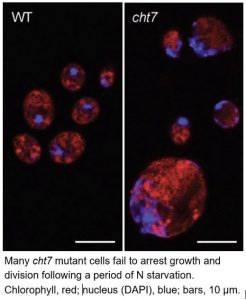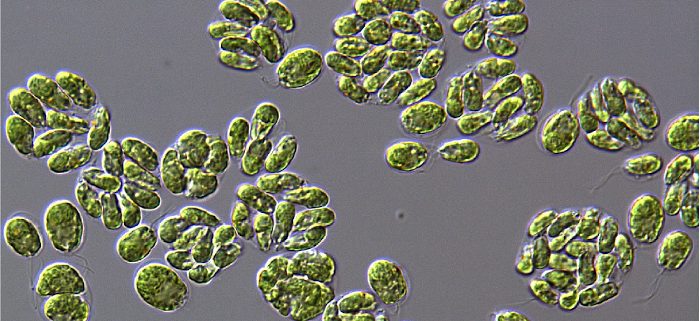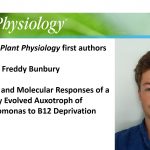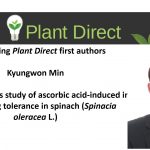How nutrients affect algal cell cycle regulation
Takeuchi et al. examine the role of an algal protein during nitrogen starvation and quiescence.
Plant Cell https://doi.org/10.1105/tpc.19.00628
By Tomomi Takeuchi and Christoph Benning, Michigan State University
Background: Living cells need energy to grow and divide. When their source of energy is scarce, many cells, regardless of their organismal origin, will stop energy-costly processes and enter a state of reversible rest, called quiescence. This is also true for the single-celled green alga, Chlamydomonas reinhardtii. The availability of nutrients, such as nitrogen (N), is an important factor determining whether the algal cells grow and divide or save energy. Although the appropriate response in a changing environment is essential for survival, little is known about how algal cells make these decisions. One protein in Chlamydomonas with a proposed role in this decision-making process is Compromised Hydrolysis of Triacylglycerols 7 (CHT7).
Question: This study’s focus was to better understand the role of CHT7 during N starvation and quiescence. Specifically, we wanted to determine if genes are misregulated in cells lacking CHT7 during N starvation, how these changes may impact the physiology of the mutant cells, and which part(s) of the CHT7 protein are important for this function.
 Findings: We found that the wild-type Chlamydomonas cells ceased to express cell cycle genes and arrested cell division with a non-replicated single nucleus by day two of N starvation. RNA levels of these genes remained high in cells lacking CHT7, and the mutant cells continue to show signs of division, including replicated nuclei, under the same conditions. In contrast to wild-type cells, many cht7 mutant cells could not survive without N, and cell division often terminated in the mutant cells even after N was resupplied. This resulted in the reduction of colony formation. It was surprising that deletion of the CXC domain, a domain which directly binds DNA in animals, was dispensable for the activity of CHT7. Instead, we found its predicted protein-interaction domains were essential.
Findings: We found that the wild-type Chlamydomonas cells ceased to express cell cycle genes and arrested cell division with a non-replicated single nucleus by day two of N starvation. RNA levels of these genes remained high in cells lacking CHT7, and the mutant cells continue to show signs of division, including replicated nuclei, under the same conditions. In contrast to wild-type cells, many cht7 mutant cells could not survive without N, and cell division often terminated in the mutant cells even after N was resupplied. This resulted in the reduction of colony formation. It was surprising that deletion of the CXC domain, a domain which directly binds DNA in animals, was dispensable for the activity of CHT7. Instead, we found its predicted protein-interaction domains were essential.
Next steps: The most important next step is to begin to investigate how the gene-regulatory activities of the CHT7 complex are exerted at the protein level. The identification of its protein interaction partners or post-translational modification status under various N conditions will likely provide insight into the molecular mechanisms of CHT7 function.
Tomomi Takeuchi, Barbara B. Sears, Chase Lindeboom, Yang-Tsung Lin, Nicholas Fekaris, Krzysztof Zienkiewicz, Agnieszka Zienkiewicz, Eric Poliner, Christoph Benning. (2019). Chlamydomonas CHT7 is Required for an Effective Quiescent State by Regulating Nutrient-responsive Cell Cycle Gene Expression. Plant Cell; DOI: https://doi.org/10.1105/tpc.19.00628




